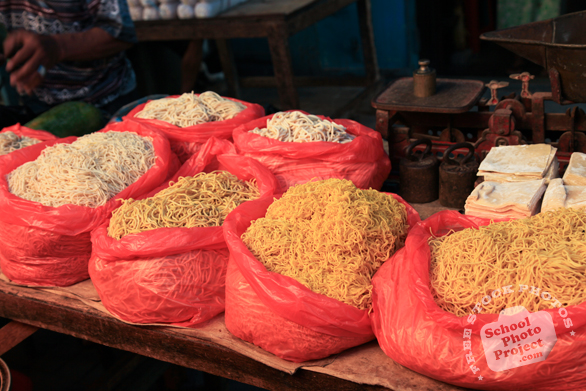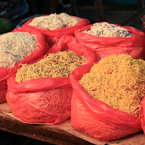Noodle
The noodle is a type of staple food
made from some type of unleavened dough which is
rolled flat and cut into one of a variety of shapes.
While long thin strips may be the most common, many
varieties of noodles are cut into waves, helices,
tubes, strings, shells, folded over, or cut into
other shapes. Noodles are usually cooked in boiling
water, sometimes with cooking oil or salt added,
but are often pan fried or deep fried. Noodles can
be refrigerated for short-term storage, or dried
and stored for future use.
In English usage, the word "noodle" is
an inclusive term that denotes texture and culinary
use, and to a lesser extent, shape, as many people
may associate it with the more common string varieties,
such as spaghetti or ramen. Material composition
or geocultural origin must usually be specified.
However, the actual word derives from the German
Nudel.
In 2002, archaeologists found an earthenware bowl
containing the world's oldest known noodles, measured
to roughly 4000 years BP through radiocarbon dating,
at the Lajia archaeological site along the Yellow
River in China. The noodles were found well-preserved.
They were described as resembling the traditional
lamian (la¯ miàn) noodle of China, which
is made by "repeatedly pulling and stretching
the dough by hand." The composition of the
oldest noodles was studied by a team of Chinese
researchers, who determined that the noodles were
made from foxtail millet and broomcorn millet. The
earliest written record of noodles is found in a
book dated to the Eastern Han period (25–220)
of China. Noodles, often made from wheat dough,
became a staple food for people of the Han Dynasty
(206 BCE - 220 CE).
(Source: Wikipedia.org)
|




















